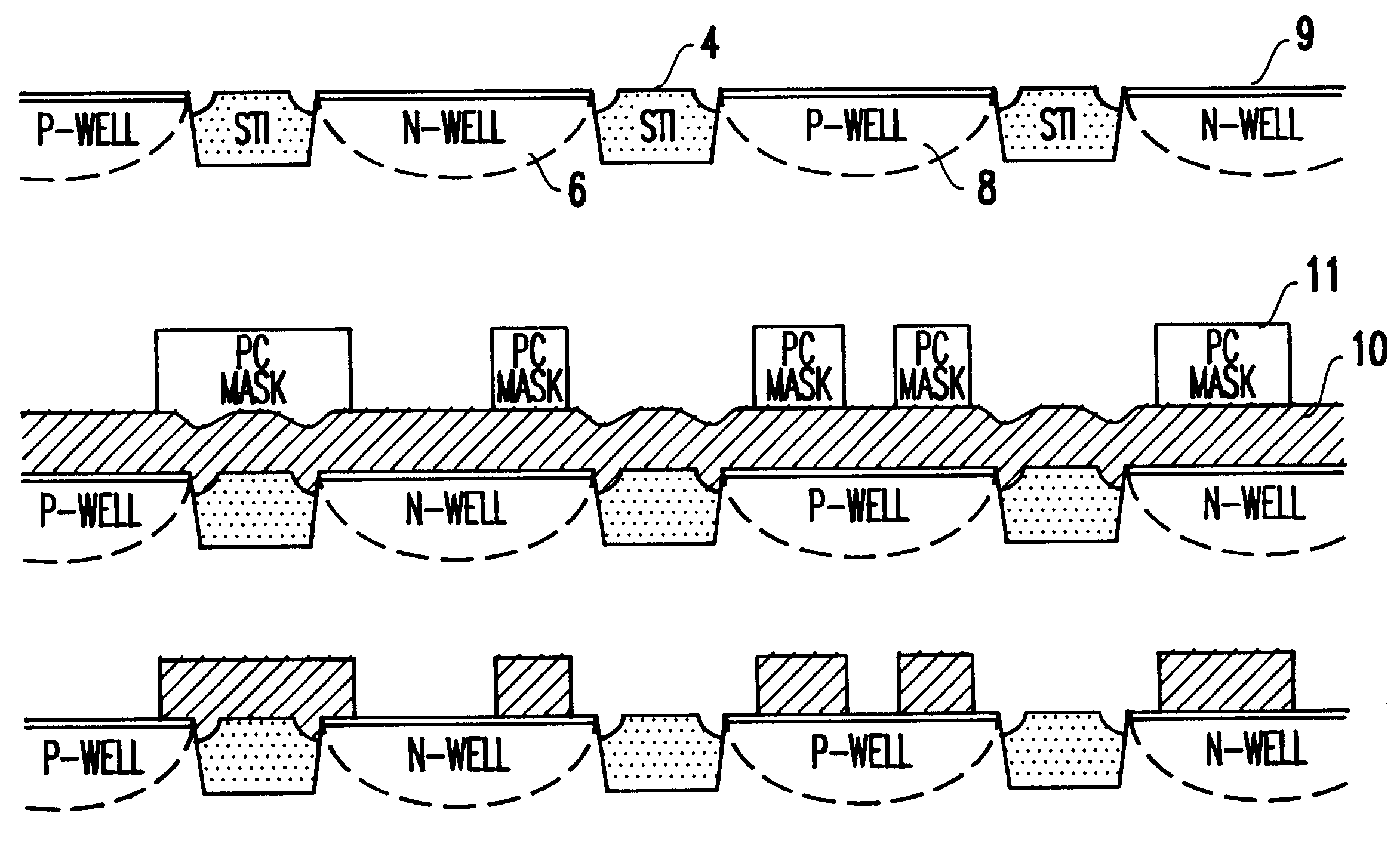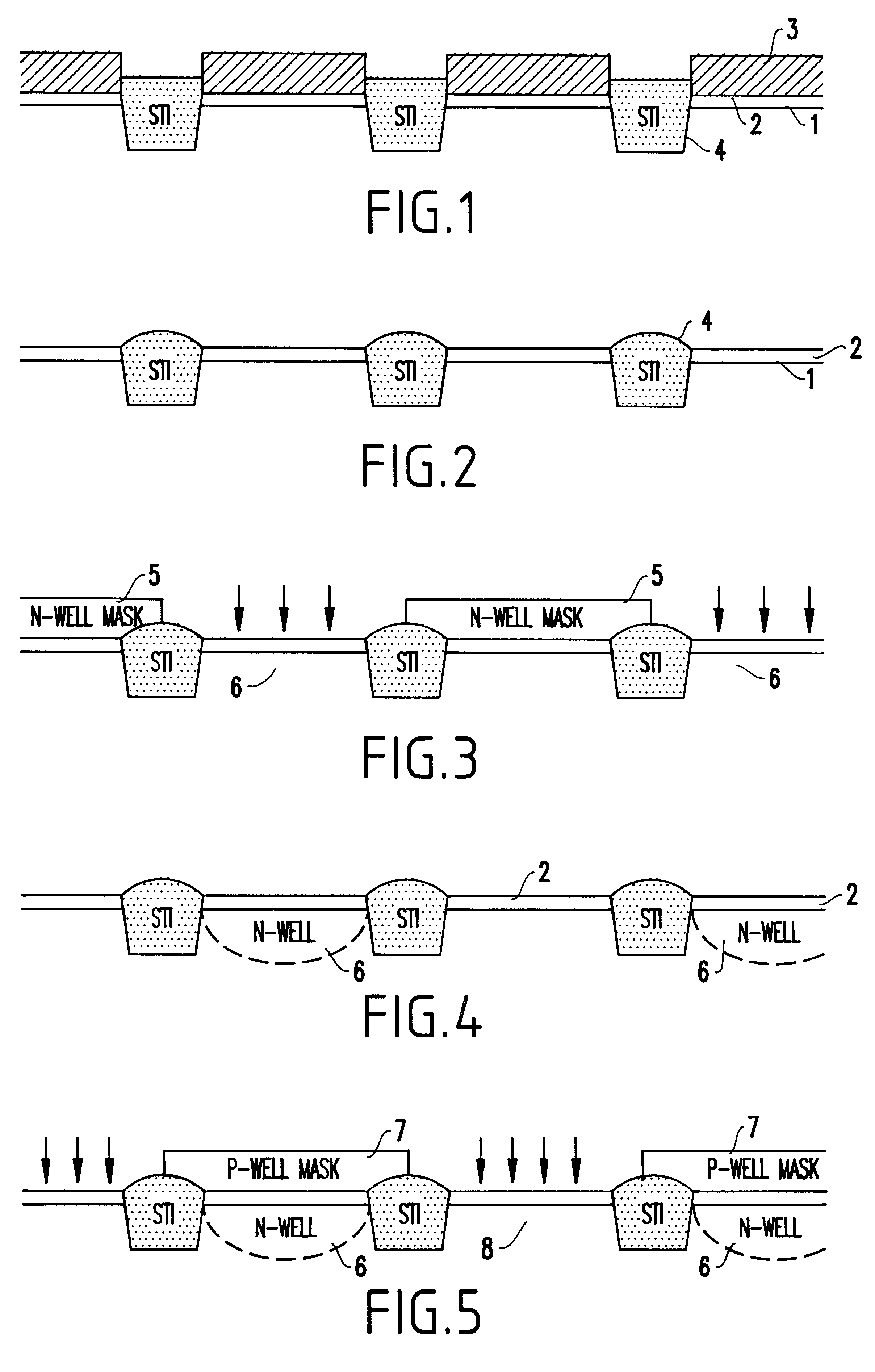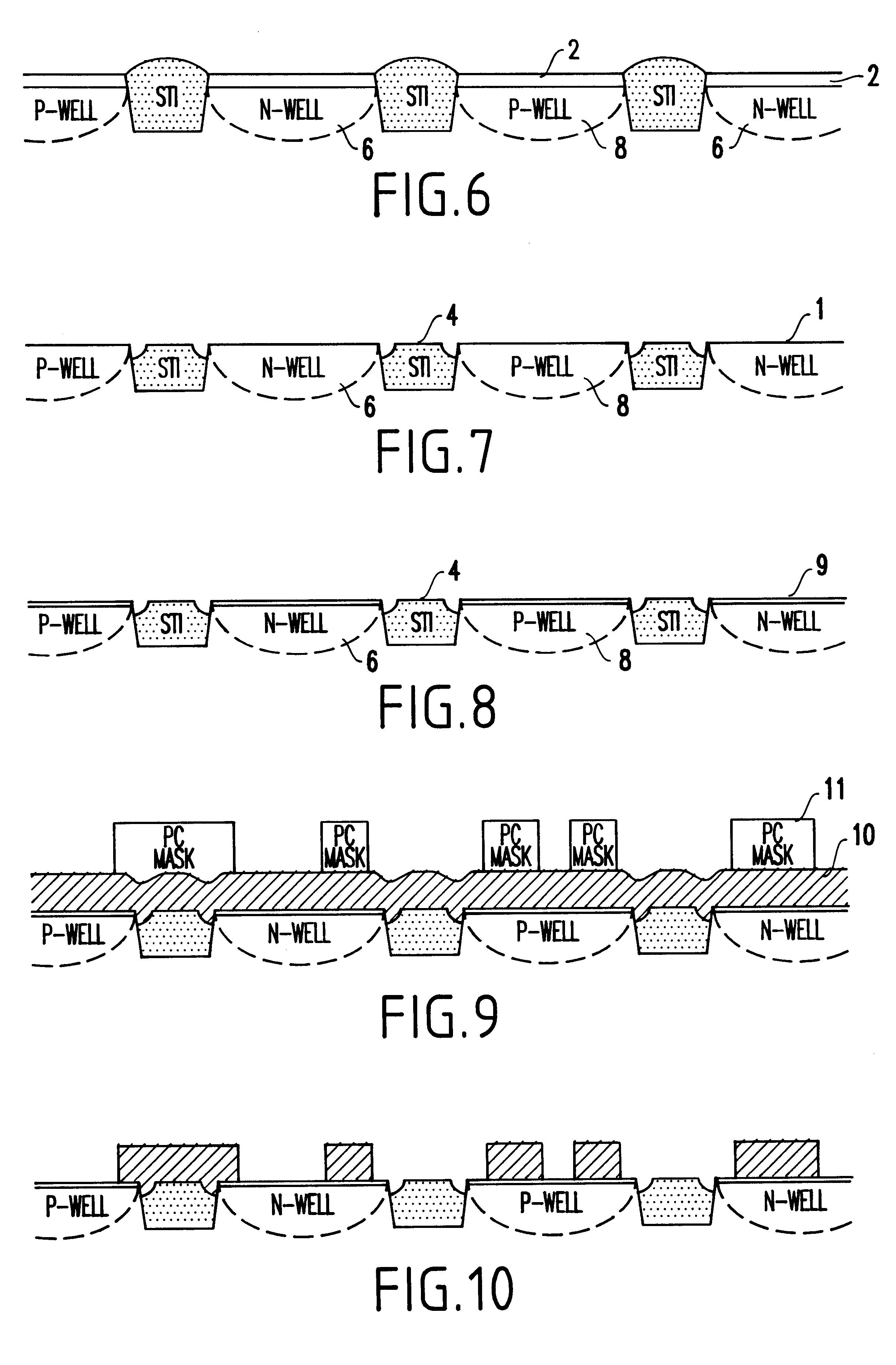Method for eliminating transfer gate sacrificial oxide
a technology of transfer gate and sacrificial oxide, which is applied in the direction of semiconductor devices, basic electric elements, electrical equipment, etc., can solve the problems of high product cost, problems such as the above-described conventional method, and the difficulty of subsequent processing
- Summary
- Abstract
- Description
- Claims
- Application Information
AI Technical Summary
Benefits of technology
Problems solved by technology
Method used
Image
Examples
Embodiment Construction
The first preferred embodiment of the present invention eliminates the transfer gate sacrificial oxide and the associated steps from the conventional process as described above. Specifically, this process uses the initial pad oxide (e.g., the oxide in an isolation pad stack) as a screen film for the well implants. For instance, if this pad oxide is beneath nitride in a stack, using a selective, well-controlled wet (e.g., hot phosphoric acid etch) or dry etch (e.g., CDE), the nitride is removed, and the pad oxide is etched to the desired thickness to perform the well ion implants. Thus, the invention eliminates an entire oxide removal step, traditionally used to expose the Si substrate before forming desired thickness screens. This invented process will reduce significantly the corner divot, trench center pulldown, and synergistically reduce the chance of exposing STI trench voids which lead to polysilicon shorts in the isolation, as shown in a comparison of FIGS. 11 and 12, with FIG...
PUM
| Property | Measurement | Unit |
|---|---|---|
| thickness | aaaaa | aaaaa |
| thickness | aaaaa | aaaaa |
| thickness | aaaaa | aaaaa |
Abstract
Description
Claims
Application Information
 Login to View More
Login to View More - R&D
- Intellectual Property
- Life Sciences
- Materials
- Tech Scout
- Unparalleled Data Quality
- Higher Quality Content
- 60% Fewer Hallucinations
Browse by: Latest US Patents, China's latest patents, Technical Efficacy Thesaurus, Application Domain, Technology Topic, Popular Technical Reports.
© 2025 PatSnap. All rights reserved.Legal|Privacy policy|Modern Slavery Act Transparency Statement|Sitemap|About US| Contact US: help@patsnap.com



